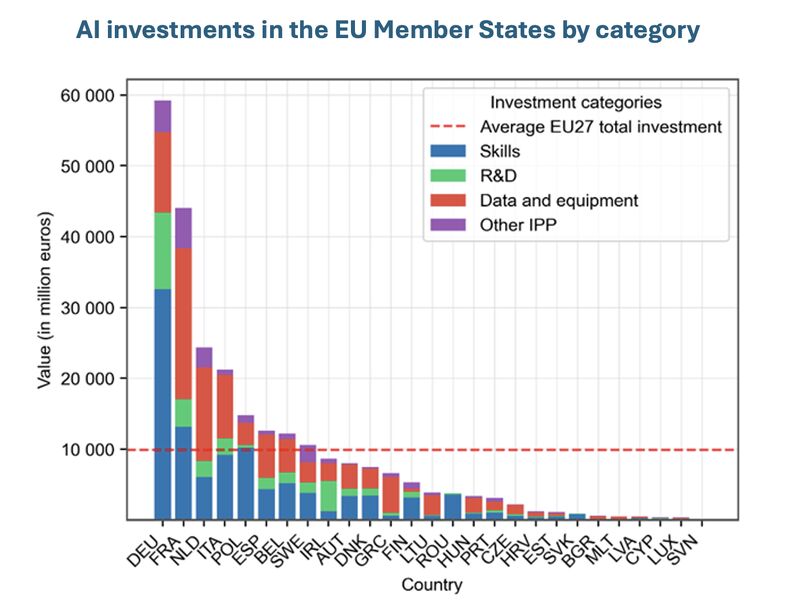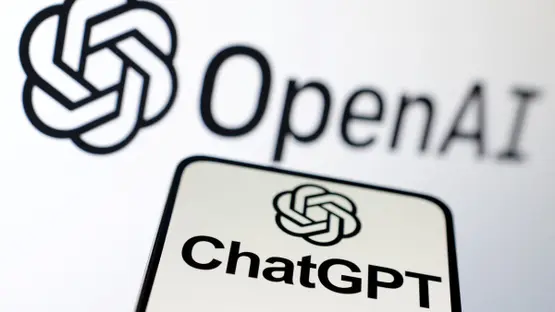How the OECD and European Commission are bringing transparency to artificial intelligence spending
Artificial intelligence dominates headlines, political speeches, and corporate announcements. Tech giants proclaim multi-billion dollar AI commitments. Governments unveil ambitious national AI strategies. Yet beneath this cacophony of promises lies a fundamental question that has remained stubbornly unanswered: How much are we actually investing in AI?
For years, this question has been nearly impossible to answer with any confidence. Investment figures lacked transparency, consistency, and independent verification. Different organizations counted different things, making meaningful comparisons virtually impossible. It was like trying to measure economic growth without agreeing on what constitutes GDP.
Now, a groundbreaking report from the OECD and the European Commission is changing that reality.
A Framework for the Future
Released on September 26, 2025, “Advancing the measurement of investments in artificial intelligence” introduces the first harmonized methodology for quantifying AI spending across nations. The framework doesn’t just count research and development dollars—it takes a comprehensive view of AI as a general-purpose technology, much like electricity or the internet, whose true cost extends far beyond code and algorithms.
The methodology captures the full spectrum of AI investment: research and development, skills training, data infrastructure, computing hardware, and organizational transformation. It combines macroeconomic data from sources like Eurostat with AI intensity coefficients derived from patent data and education statistics to isolate genuine AI-related spending from broader technology expenditures.
The Numbers Tell a Story
Applying this framework to the European Union reveals investment levels that exceed many expectations. In 2023, total AI investment across the EU27 reached approximately €257 billion—well above the €20 billion annual target set by the European Union Coordinated Plan on Artificial Intelligence for 2030.
But the headline figure only begins to tell the story. The composition of this investment reveals where Europe is placing its bets:
Private sector leadership: Private investment accounts for 73% of total AI spending, decisively outpacing public investment. This suggests that European companies view AI not as a speculative technology but as a competitive necessity.
Skills take center stage: The largest single investment category is skills development, claiming 41% of total spending. This makes intuitive sense—AI systems are only as valuable as the people who can build, deploy, and leverage them effectively.
Infrastructure foundation: Data and equipment investments account for 37% of spending, reflecting the massive computational requirements of modern AI systems and the data infrastructure needed to train and deploy them.
Geographic patterns: Germany, France, and the Netherlands lead in absolute investment terms, particularly in AI skills and infrastructure. However, when adjusted for population, Ireland emerges as the per capita investment leader, suggesting different national strategies for AI development.
The Post-2019 Acceleration
The data reveals a clear inflection point. Following modest growth through 2019, AI investments accelerated sharply in the years that followed. This surge affected all investment categories but was particularly pronounced in software development and AI-enabling infrastructure—the foundational layers upon which AI applications are built.
This timing isn’t coincidental. The period coincides with breakthroughs in transformer architectures, the emergence of large language models, and growing recognition of AI’s potential across industries. European organizations weren’t just watching these developments—they were investing heavily to participate in them.
Why Measurement Matters
The importance of this framework extends far beyond satisfying curiosity about investment levels. Effective policy requires measurable outcomes. Without consistent metrics, governments cannot evaluate whether their AI strategies are translating into tangible capital formation. Companies cannot benchmark their investments against industry norms. Researchers cannot study the relationship between AI investment and economic outcomes.
The timing of this framework is particularly significant. On the same day the report was released, the European Commission launched its Apply AI Strategy, dedicated to supporting AI adoption across high-impact sectors. A cornerstone of this strategy is the European AI Observatory, a platform that will monitor AI development, impact, and trends across sectors.
The new measurement framework will provide one of the Observatory’s key data sources, offering a baseline for evaluating AI investments across the EU. This creates an accountability mechanism that has been sorely lacking: Are we investing enough in AI? Are we investing in the right areas? How do we compare globally?
Global Implications
While this framework focuses on the European Union, its implications extend globally. The methodology can be applied to benchmark AI investments in other leading economies, including the United States, the United Kingdom, Canada, and Japan. This enables meaningful cross-national comparisons for the first time.
Such comparisons matter because AI development is inherently global. Talent flows across borders. Research builds on international collaborations. Companies compete in global markets. Understanding relative investment levels helps nations assess their competitive positions and adjust their strategies accordingly.
The Road Ahead
The framework represents progress, not perfection. Measuring investment in a rapidly evolving technology presents inherent challenges. Definitions shift. New investment categories emerge. The boundary between AI and broader digital transformation blurs.
But these challenges don’t diminish the framework’s value—they underscore why such standardization matters. As AI continues to permeate every sector of the economy, the old management adage applies with renewed force: what gets measured gets managed.
For the first time, policymakers, business leaders, and researchers have rigorous tools to manage AI investment with the transparency and accountability it deserves. The framework provides a common language for discussing AI investment and a foundation for evidence-based policy.
The question is no longer whether we can measure AI investment. The question is what we’ll do with that knowledge.
About the Report
“Advancing the measurement of investments in artificial intelligence” was jointly published by the OECD and the European Commission on September 26, 2025. The report is available at the OECD’s digital library and represents collaboration between multiple organizations to establish standardized AI investment metrics.
Authors: The accompanying AI Wonk blog post was authored by Lucia Russo, Sara Marchi, Jeff Mollins, and Antoine-Alexandre André.




